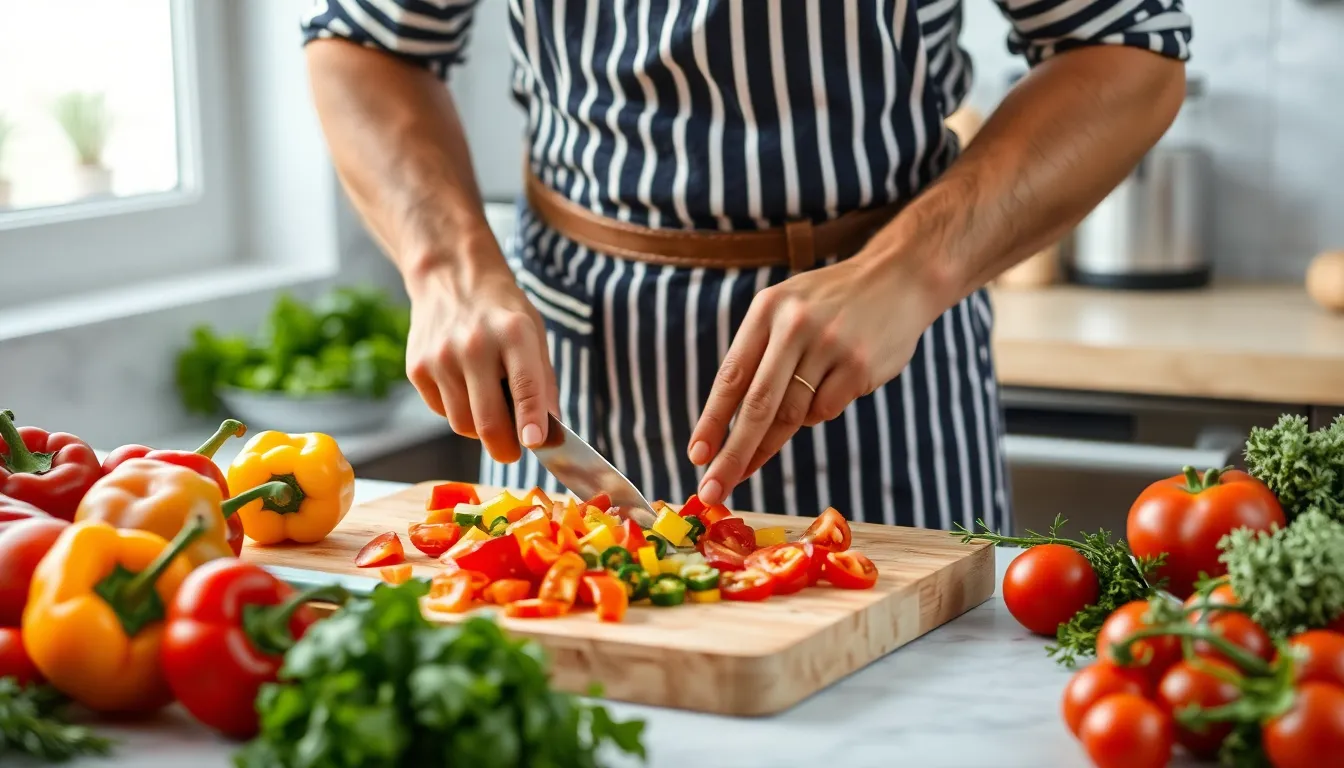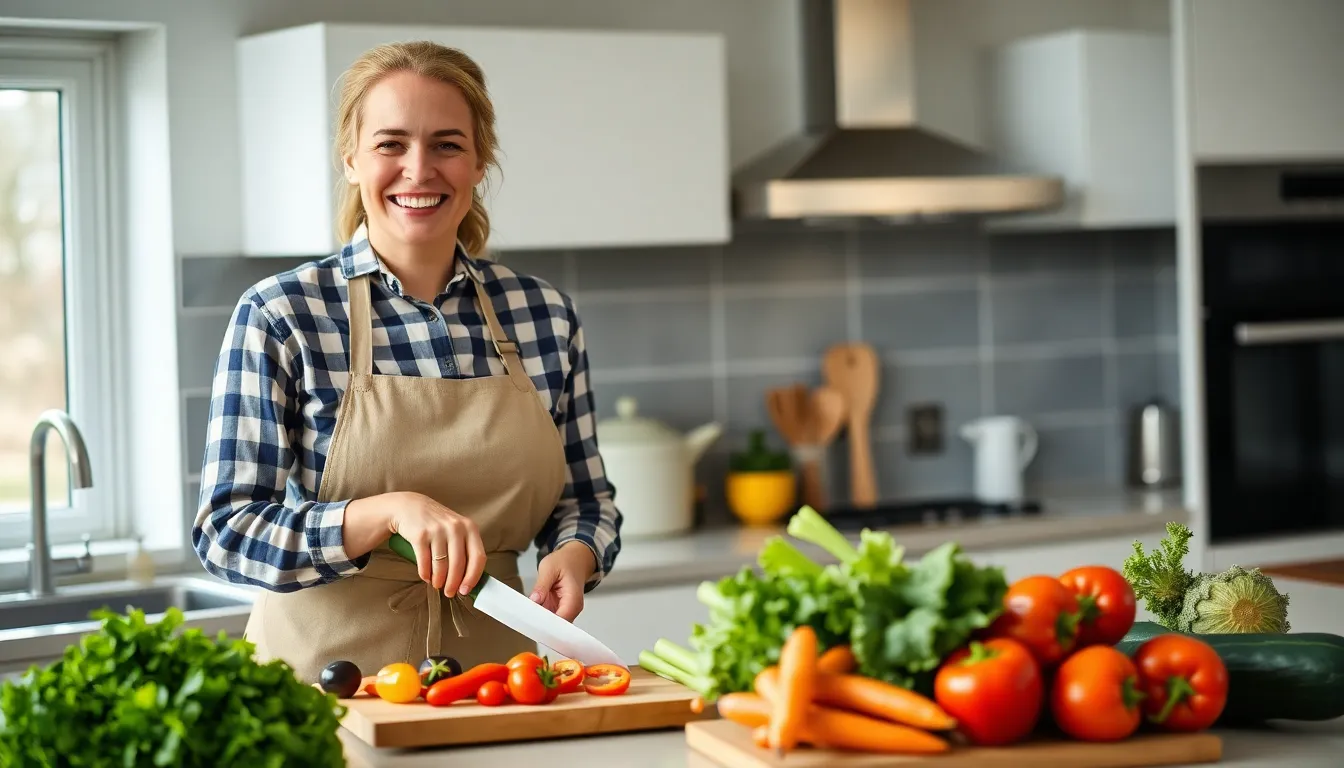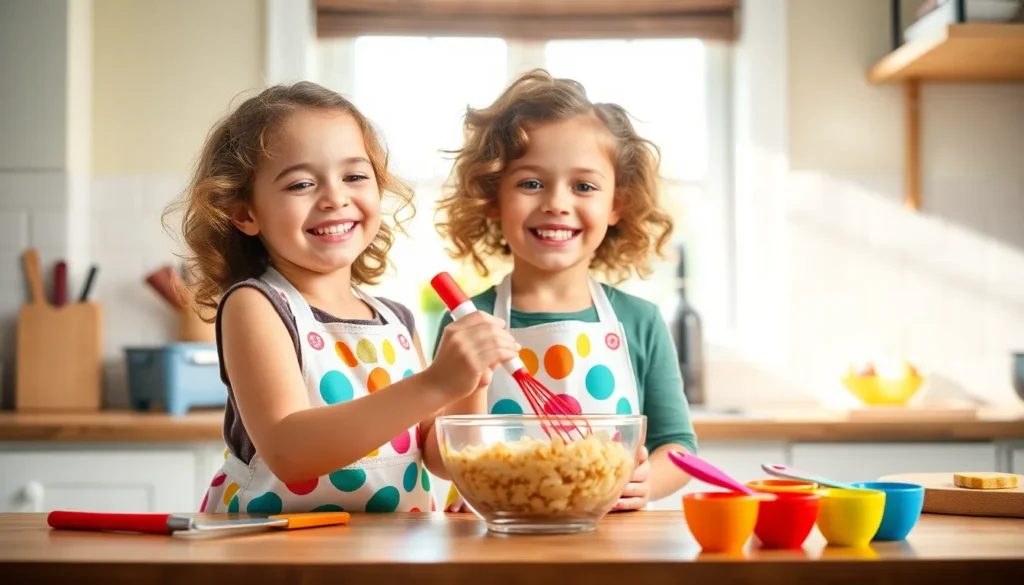Table of Contents
ToggleIn a world where takeout is just a tap away, the art of food preparation often gets overshadowed. But why let a delivery driver have all the fun? With a bit of guidance, anyone can transform their kitchen into a culinary playground. Imagine whipping up a meal so delicious that even your microwave will feel jealous.
Food preparation isn’t just about chopping veggies and boiling pasta; it’s about unleashing creativity and discovering flavors that dance on the taste buds. Whether you’re a seasoned chef or someone who thinks “gourmet” means adding spices to instant noodles, this guide will help navigate the delicious maze of meal prep. Get ready to don that apron and impress everyone from your family to your Instagram followers—who knew cooking could be this fun?
Importance of Food Preparation Guidance
Food preparation guidance plays a crucial role in promoting healthy eating habits. Cooking at home fosters an understanding of ingredients and portion sizes. Understanding these aspects directly enhances overall nutrition.
Meal prep guidance supports individuals in saving time and money. Organizing meals ahead of time reduces stress during busy weekdays. Time management becomes more efficient, allowing for better meal choices.
Culinary skills develop through following guidance, enhancing confidence in the kitchen. Experimenting with recipes can lead to discovering new flavors and techniques. Trying out various cuisines expands a person’s culinary repertoire.
Safety guidelines for food handling are essential. Adhering to these guidelines minimizes the risk of foodborne illnesses. Techniques like proper storage and cleaning can prevent cross-contamination.
Learning to prepare food cultivates a sense of achievement. Successfully creating a dish can boost one’s self-esteem and culinary creativity. Sharing homemade meals with family and friends nurtures connections and strengthens relationships.
This guidance also makes it easier to accommodate dietary preferences or restrictions. Whether it’s vegetarian meals or gluten-free options, food preparation allows for customization. Preparing meals according to personal needs ensures satisfaction and enjoyment.
Cooking can serve as a social activity, bringing people together. Gathering for meal prep encourages collaboration and communication. Those who participate often leave with lasting memories and enjoyable experiences.
Essential Techniques for Food Preparation

Understanding essential techniques for food preparation can enhance cooking skills while promoting a more enjoyable experience. Embracing these skills helps individuals feel more confident in the kitchen.
Knife Skills
Knife skills form the foundation of effective food preparation. Proper techniques include holding the knife correctly and using a stable cutting board. Dicing and slicing occur with precision by employing the right grip. Additionally, knowing which knife to use for specific tasks, such as a chef’s knife for chopping and a paring knife for peeling, adds efficiency. Practicing these skills improves speed and safety, reducing the likelihood of accidents. Regularly honing knife skills ensures mastery over time, ultimately elevating the quality of meals prepared.
Cooking Methods
Cooking methods significantly impact flavor and texture. Techniques such as sautéing, steaming, and roasting each bring out unique qualities in ingredients. Sautéing allows for quick cooking while preserving color and nutrients in vegetables. Steaming keeps the moisture and essential vitamins intact, making it a healthy choice. Roasting creates rich flavors through caramelization, ideal for meats and root vegetables. Understanding these diverse methods offers creative opportunities for experimentation, encouraging cooks to explore new recipes while maximizing their culinary potential.
Meal Planning and Organization
Meal planning and organization streamline cooking and enhance efficiency. A well-structured approach makes preparing meals enjoyable and manageable.
Creating a Grocery List
Creating a grocery list eliminates confusion during shopping. Focus on ingredients needed for planned meals and categorize them based on grocery store sections. Prioritize fresh produce, proteins, and grains to ensure balanced meals. Inventory pantry items before finalizing the list to avoid duplicates. Include snacks and beverages for convenience. Many apps help streamline list-making and allow for easy access while shopping.
Food Storage Tips
Food storage tips reduce waste and maintain freshness. Use airtight containers to extend the shelf life of perishable items. Label containers with contents and dates to track freshness effectively. Store raw meat on the bottom shelf to prevent cross-contamination. Organize items in the refrigerator based on their perishability, keeping quick-use foods at the front. Freezing surplus meals allows for quick heat-and-eat options while preserving nutritional value. Consistently check for expired items and rotate stock to ensure nothing goes to waste.
Safety and Hygiene Practices
Maintaining safety and hygiene during food preparation is essential for preventing foodborne illnesses. Following proper practices ensures a safe cooking environment and healthier meals.
Proper Handwashing
Proper handwashing is a vital step in food safety. Start by wetting hands with clean, running water. Apply soap and lather thoroughly, covering all surfaces including backs, between fingers, and under nails. Scrubbing for at least 20 seconds effectively removes germs. Rinse hands well under clean, running water. Drying hands with a clean towel or air drying eliminates remaining bacteria. Regular handwashing, especially before handling food, minimizes the risk of contamination.
Avoiding Cross-Contamination
Avoiding cross-contamination protects food from harmful bacteria. Use separate cutting boards for raw meat, poultry, and seafood, as well as fresh produce. Keeping utensils and surfaces clean between tasks is crucial. Storing raw foods on the bottom shelf of the refrigerator prevents juices from dripping onto other foods. Emphasizing these practices not only safeguards meals but also promotes overall health.
Embracing food preparation can transform not just meals but the entire cooking experience. It empowers individuals to take control of their nutrition while fostering creativity and confidence in the kitchen. By learning essential techniques and practicing proper safety measures, anyone can elevate their culinary skills and enjoy the process.
The benefits extend beyond personal satisfaction. Cooking at home nurtures relationships and creates lasting memories. With a structured approach to meal planning and organization, it’s possible to streamline cooking and make healthier choices effortlessly.
Ultimately, food preparation is more than just a task; it’s an opportunity to explore flavors, connect with others, and cultivate a healthier lifestyle.




